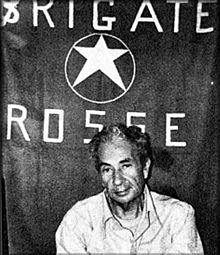
Back الإرهاب في إيطاليا Arabic Τρομοκρατία στην Ιταλία Greek تروریسم در ایتالیا Persian Terrorismo in Italia Italian

Terrorism in Italy is related to political and subversive terrorism activities, carried out by various groups and organizations with different and sometimes conflicting methods, motivations and interests. This article is primarily about late 20th-century and early 21st-century terrorism.
Since the late 1960s, terrorism became a more serious issue in Italy. In the early part of this period, it was known as "opposed extremisms", later the media renamed this period as the "Years of Lead," inspired by Die bleierne Zeit, or Anni di piombo, a film by German director Margarethe von Trotta that won the Golden Lion at the Venice Film Festival in 1981. The "Years of Lead" period ended at the close of the 1980s decade.
At the end of the 1990s, a fresh wave of political terrorism, consisting of severe yet sporadic episodes, broke out again in Italy. Episodes occurred until the early 2000s.
In addition to political terrorism, which was widespread during the Cold War in order to contribute to the "strategy of tension", Mafia-linked terrorism was active in Sicily. The main criminal organizations that operated in that period were the Cosa Nostra,[1] Camorra, 'Ndrangheta and Sacra Corona Unita.
- ^ "Processo Dell'Utri, Spatuzza in aula: Graviano mi parlò di Berlusconi" (in Italian). corriere.it. 4 December 2009. Archived from the original on 14 October 2019. Retrieved 9 February 2019.